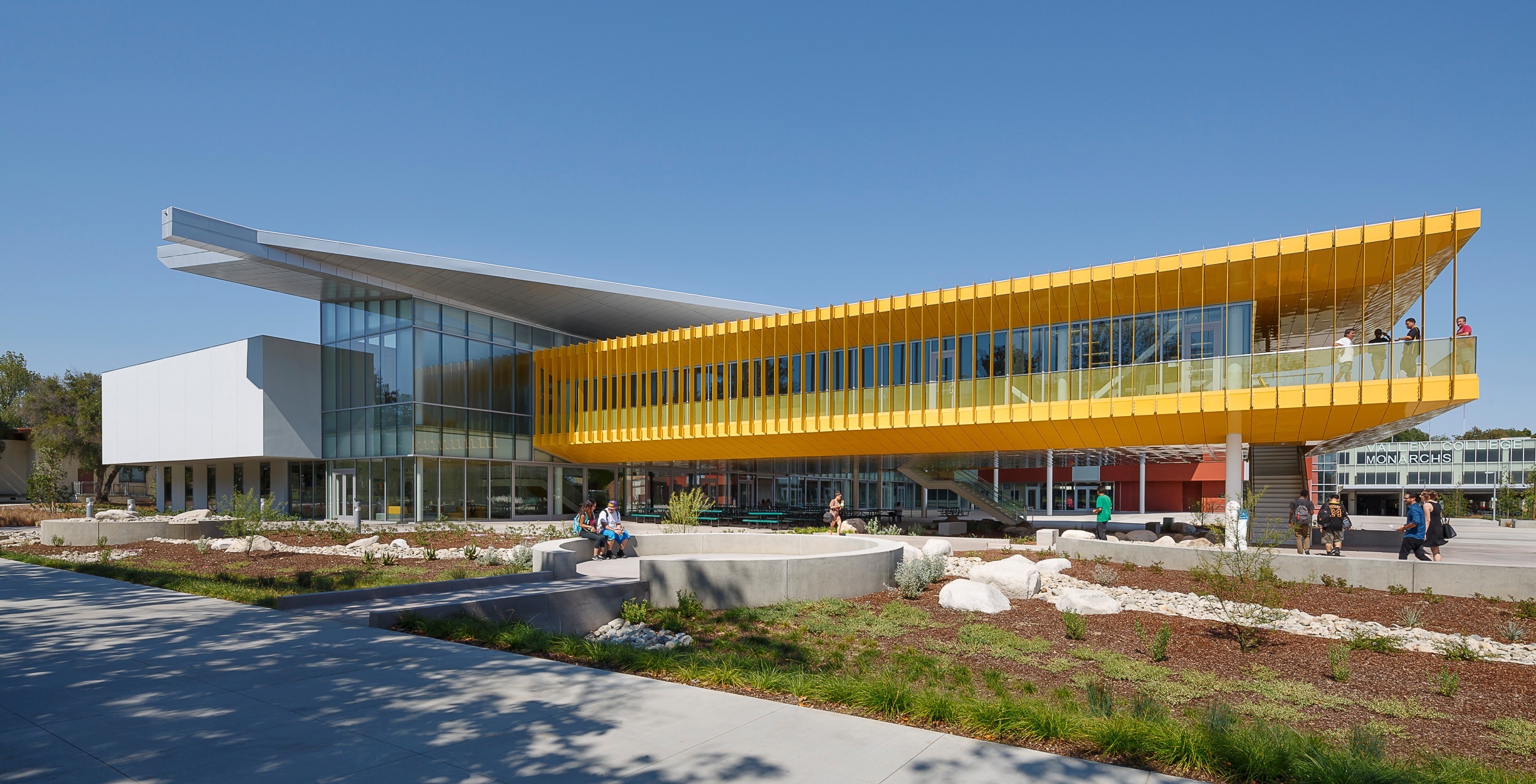A Case Study in Cantilevered Design
Cantilevers create bold, striking architectural forms, often with dramatic effect. They appear to defy gravity, supporting a section of a building without any apparent vertical support. Integrating the engineering and architecture at an early stage can lead to a scheme that functions beyond what the space may normally allow. It delivers a unique, dramatic engineering solution for real-life challenges.
Beyond aesthetics, cantilevers offer a highly functional, cost-effective role in building design, developing value beyond aesthetics. Cantilevers eliminate the need for columns, maximizing space and views. Removing columns can open up a design, allowing access to more spaces and developing more flexibility. On another level, eliminating columns and support structures creates opportunities to connect with nature, taking full advantage of a limited site.
%206865.jpg) Cal Poly Pomona Student Recreation Center
Cal Poly Pomona Student Recreation Center
Pomona, California
Funded by the students, the 120,000-square-foot Bronco Recreation and Intramural Complex (BRIC) at Cal Poly Pomona provides ultramodern technology in the areas of health and fitness.
The site for the recreation center created a variety of challenges. Surrounded by buildings, a road, a pedestrian walkway and a utility easement, there was a limited footprint where the recreation center could physically touch the ground. In addition, there is a grade differential of approximately 14 feet between the north and south ends of the building. The plan called for fitness and multi-purpose studios on the ground floor, gymnasium courts on the second floor and a one-quarter mile running track along the perimeter of the third floor. The building had to be kept under four stories, and there were concerns that exterior columns would limit pedestrian areas.
With columns ruled out, a cantilevered solution made sense. The cantilever allows the third floor to extend far beyond the floors below. But this is not your average cantilever. Ideally, a back span would be about twice as long as the cantilever. In this case, the back span was cut short, to accommodate the two-story basketball court within the recreation center. The cantilever is about twice as long as the back span, which made the physics very challenging and the aesthetic quite dramatic. A combination of built-up plate girders and an innovative Vierendeel truss system safely supports almost 60 feet of double cantilevered space. With the running track on the top floor, joggers can take advantage of the views of the campus.
 Los Angeles Valley College Monarch Center
Los Angeles Valley College Monarch Center
Valley Glen, California
Offering a bookstore, dining hall, health center and student lounge, this university center provides a new home for Los Angeles Valley College staff, faculty and students.
Located in sweltering Los Angeles-area city of Valley Glen, the glass Monarch Center has a critical need for shade. To keep energy costs down and visitors comfortable, the building’s central plaza is covered by a large “solar umbrella” butterfly roof. In addition to providing shade in the harsh summer days, the cantilevered roof form offers shelter from the rain and collects rainwater on stormy days, enabling students to take their activities outside year-round.
The plaza has very few columns to minimize the disruption of traffic flow. An elevated “skybox” on the second floor creates an unmistakable destination for students, while providing acoustical separation, shade, shelter, landscape and unobstructed views underneath. Around the perimeter of this elevated sky box, the columns are moved in 10 to 12 feet, giving the appearance that the structure floats over the plaza. In addition to the striking views, this gathering space is shaded by the overhang and opens traffic to flow freely under it, drawing people into the active student life inside.
%206820.jpg) California State University, East Bay Student and Faculty Support Center
California State University, East Bay Student and Faculty Support Center
Hayward, California
The five-story Student and Faculty Support Center houses administrative offices and student support spaces, and serves as the campus gateway and welcome center.
The Student and Faculty Support Center is an L-shaped building, with the upper two floors spanning over an entry plaza. The unique shape serves the building’s role as the gateway to the campus and provides a shaded outdoor gathering space for its users.
To create this unique gateway, a steel cantilever was applied, anchored to a concrete elevator tower that takes visitors directly to and from the upper floors. Supporting beams are applied sparingly, maintaining space for people to easily walk from the adjacent parking lot, through the support center to the rest of the campus.
LPA’s structural engineers focused on occupant safety and the long-term seismic resiliency of the building. Located less than a mile from the Hayward Fault—one of the most active seismic faults in California--the building features three ductile, reinforced concrete shear wall cores, which provide durability, strength and stiffness for a building designed to last more than 100 years.
This story originally appeared in the first edition of Catalyst, a quarterly publication that takes a deep dive into the new ideas, industry leaders and cutting-edge initiatives changing lives by design.
